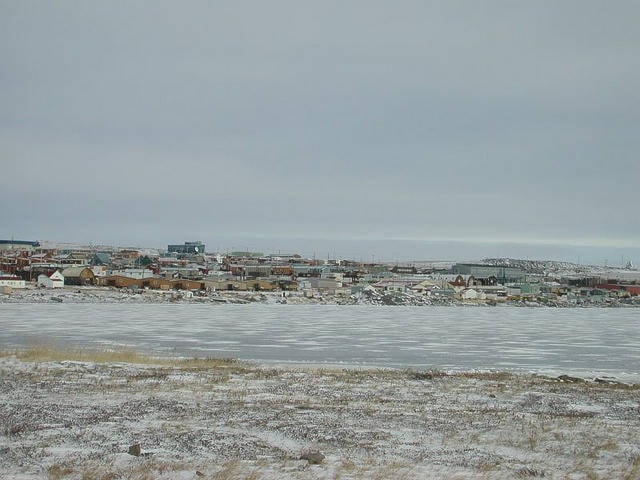The race is on to clean up as much contaminated soil and snow as possible following the discovery of an estimated 10,000-litre leak in March at Baker Lake’s fuel tank farm.
“We have a handful of residents that are really concerned because it’s uphill from our fresh water,” Mayor Richard Aksawnee told Kivalliq News on May 14.
The territorial government estimates cleanup costs to be in the range of $500,000 to $1 million.
The community was first made of aware of a leak at the tank farm on March 5, following the rupture of a drain valve on the pipeline.
While that leak was believed to have been fixed, an oil spill was detected outside Baker Lake’s protective berm surrounding the tank farm on March 29. It wasn’t until April 21 that the hamlet found out the extent of the spill from the Government of Nunavut (GN).
According to an email from the GN’s Petroleum Products Division (PPD), an environmental response team was mobilized to Baker Lake on April 24.
The team has built a 20- by 40-metre temporary containment cell to the south of the facility. The cell contains gravel berms, is lined with non-woven geotextile and is covered with a high-density polyethylene liner, in an effort to properly contain snow and melt water.
“A significant amount of work has been completed to contain the hydrocarbons and reduce the risk of migrating product reaching Baker Lake’s water supply, however, this risk still exists until the site is remediated,” reads the email from PPD.
So far, approximately 1,700 cubic metres of impacted snow and ice have been placed in the cell.
Absorbent booms and pads have also been deployed to control any fuel in the melt water.
The team is constructing an underflow dam with trenches in an effort to control runoff and limit it to within the site.
“As the snow melts within the containment cell, it will be placed into a cleaned and dedicated tank within the Petroleum Products Division tank farm, and it will be treated for hydrocarbon impacts prior to release,” the email states.
Aksawnee said he has been in constant contact with the crews on the ground. The hamlet has also been conducting weekly meetings with PPD.
“We’re in regular communication with the experts through email, phone calls and in-person,” he said. “Based on what we’ve seen, they’re doing a pretty good job.”
The mayor added that freezing temperatures and high winds made it difficult to make progress last week.
“The last few days it’s been horrific,” Aksawnee said on May 14. “With this freezing temperature we’ve been having it’s been a hurdle for the environmental cleanup.”
Aksawnee said the community has also plowed a road on the other side of the tank farm as a precautionary measure in the event of a fire due to the spill.
“Our hamlet started opening a road toward the Agnico dock, should something tragic happen,” Aksawnee said.
According to PPD, the cleanup and removal of the temporary containment cell is expected to be completed this summer. However, monitoring of the site and sampling of soils will continue into 2022 and 2023.
